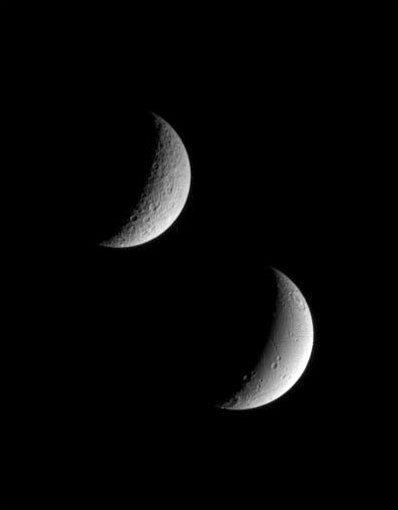
Spaceflight Now +

|

|

|

|

Premium video content for our Spaceflight Now Plus subscribers.

Mars rover panoramas
 New panoramas from NASA's long-lasting Mars Exploration Rovers show the view from the Columbia Hills where Spirit continues its adventure and the strange landscape at Meridiani Planum where Opportunity is driving southward. New panoramas from NASA's long-lasting Mars Exploration Rovers show the view from the Columbia Hills where Spirit continues its adventure and the strange landscape at Meridiani Planum where Opportunity is driving southward.

 Spirit | Opportunity Spirit | Opportunity

Hubble Space Telescope
 Scientists marvel at the achievements made by the orbiting Hubble Space Telescope in this produced movie looking at the crown jewel observatory that has served as our window on the universe. Scientists marvel at the achievements made by the orbiting Hubble Space Telescope in this produced movie looking at the crown jewel observatory that has served as our window on the universe.

 Play video Play video

SOHO anniversary
 10 years ago: The Solar and Heliospheric Observatory, a joint European and American Sun-watching probe, blasts off from Cape Canaveral aboard a Lockheed Martin Atlas 2AS rocket. 10 years ago: The Solar and Heliospheric Observatory, a joint European and American Sun-watching probe, blasts off from Cape Canaveral aboard a Lockheed Martin Atlas 2AS rocket.

 Play video Play video

Huygens science results
 The European Space Agency's Huygens probe, launched from NASA's Cassini spacecraft, descended through the atmosphere of Saturn's moon Titan and landed on its mysterious surface in January. Scientists hold this news briefing to report on new results from the daring mission. The European Space Agency's Huygens probe, launched from NASA's Cassini spacecraft, descended through the atmosphere of Saturn's moon Titan and landed on its mysterious surface in January. Scientists hold this news briefing to report on new results from the daring mission.

 Play video Play video

Mars Express update
 Project scientists working on the European Space Agency's Mars Express spacecraft now orbiting the Red Planet hold a news conference to announce some interesting results from the ongoing mission. Project scientists working on the European Space Agency's Mars Express spacecraft now orbiting the Red Planet hold a news conference to announce some interesting results from the ongoing mission.

 Play video Play video

An American in orbit
 Mercury astronaut John Glenn becomes the first American to orbit the Earth on February 20, 1962, when he is launched aboard Friendship 7. Mercury astronaut John Glenn becomes the first American to orbit the Earth on February 20, 1962, when he is launched aboard Friendship 7.

 Play video Play video

 Become a subscriber Become a subscriber
 More video More video

|

|

|

|
|

|

Seeing double at Saturn
CASSINI PHOTO RELEASE
Posted: December 12, 2005

Credit: NASA/JPL/Space Science Institute
Download larger image version here
|
Saturn's sibling moons, Rhea and Dione, pose for the Cassini spacecraft in this view.
Even at this distance, it is easy to see that Dione (below) appears to have been geologically active in the more recent past, compared to Rhea (above). Dione's smoother surface and linear depressions mark a contrast with Rhea's cratered terrain.
Sunlit terrain seen on Rhea (1,528 kilometers, or 949 miles across) is on the moon's Saturn-facing hemisphere. Lit terrain on Dione (1,126 kilometers, or 700 miles across) is on that moon's leading hemisphere. North is up.
The image was taken in visible light with the Cassini spacecraft narrow-angle camera at a distance of approximately 1.8 million kilometers (1.1 million miles) from Rhea and 1.2 million kilometers (800,000 miles) from Dione. The image scale is 11 kilometers (7 miles) per pixel on Rhea and 7 kilometers (4 miles) per pixel on Dione.
The Cassini-Huygens mission is a cooperative project of NASA, the European Space Agency and the Italian Space Agency. The Jet Propulsion Laboratory, a division of the California Institute of Technology in Pasadena, manages the mission for NASA's Science Mission Directorate, Washington, D.C. The Cassini orbiter and its two onboard cameras were designed, developed and assembled at JPL. The imaging operations center is based at the Space Science Institute in Boulder, Colo.
|

|

|

|

|



